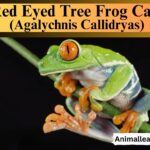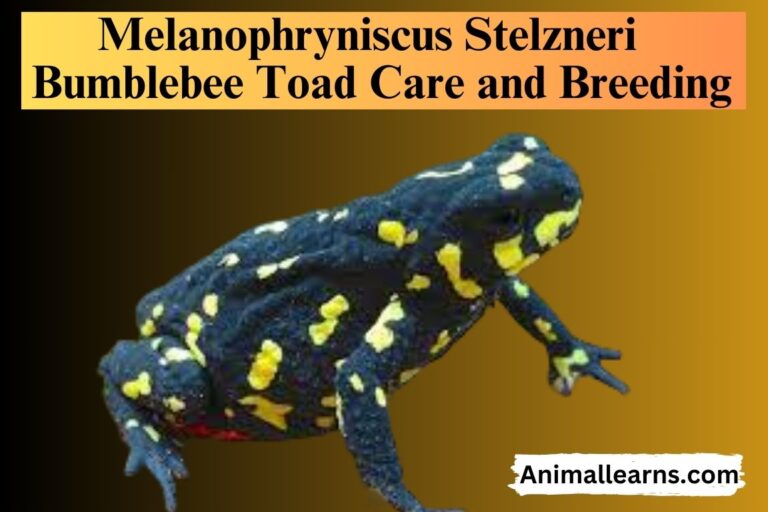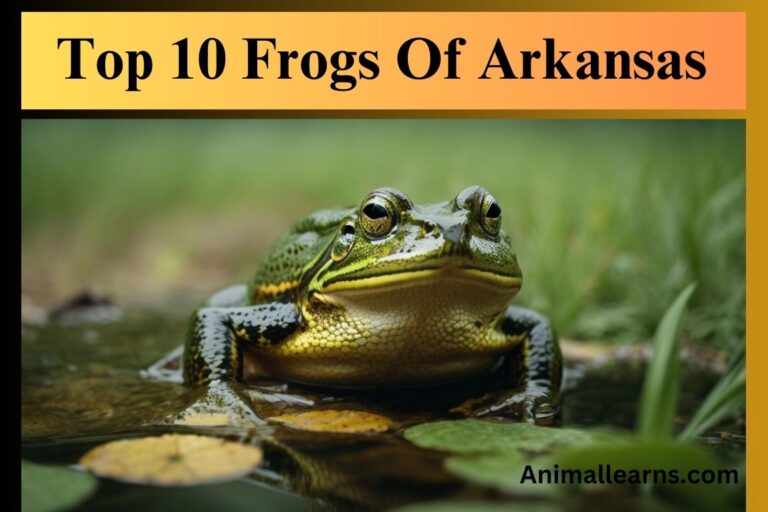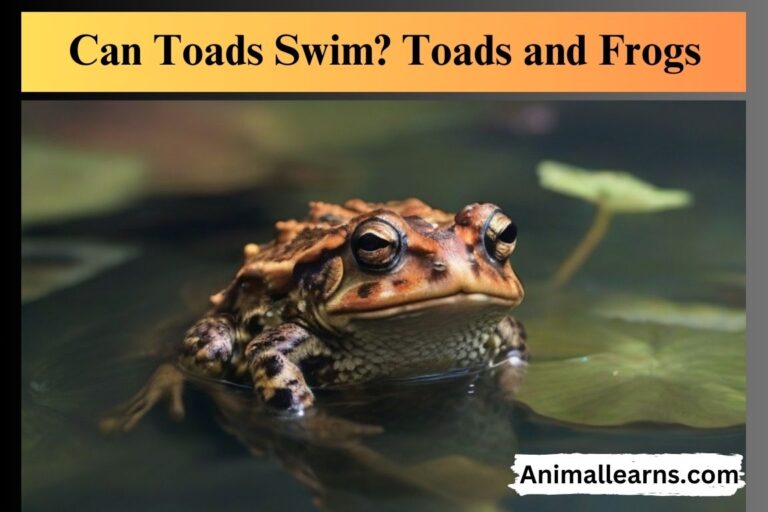Frog Terrarium: A Complete Guide

Frog terrarium is an amazing way to bring the outdoors inside while giving your frog companions a healthy place to live. They provide a regulated setting in which you may adjust the landscape, humidity, and temperature to suit the particular requirements of the frog species of your choice.
Frog Terrarium Minecraft
Contents
By constructing a terrarium in Minecraft, you may provide your frog companions with a lovely and stimulating habitat. This fenced-in habitat gives your frogs a secure and pleasant area to live while enabling you to see and interact with them.
Selecting a place in your world is the first step in the easy process of building a terrarium in Minecraft. Make sure it’s easily accessible and well-lit for simple upkeep. Then build the walls with transparent glass panes or blocks so you can see what your frogs are up to. Consider using ice chunks or vibrant stained glass to add a little pizzazz.
Tree Frog Terrarium

Careful planning and exacting attention to detail are necessary to create a flourishing tree frog terrarium. The enclosure needs to be big enough for the species you are keeping, and it needs to have a substrate that drains properly and permits burrowing.
Live plants are visually pleasing and enhance the quality of the air; climbing frames and hides offer necessary security and coziness. Ensuring a constant temperature and replicating the natural cycle of day and night in lighting is essential for general well-being.
Acquiring high humidity levels by misting or humidifiers is crucial, as is having a clean water dish for washing and drinking. Appropriate nutrition is ensured by a variety of live food, such as fruit flies and crickets, that have been powdered calcium.
Choosing the Right Frog Terrarium
- Size: Make sure the terrarium you choose is the right size for the type of frog you have. bigger species may need a 20-gallon tank or bigger; generally speaking, a 10-gallon tank is sufficient for a single tiny frog.
- Type: Select a terrarium made of plastic or glass. Plastic is lighter and more likely to hold onto humidity than glass, which provides better vision but needs more ventilation.
Exploring Frog Terrarium Kits
A unique opportunity to view these interesting amphibians in a controlled setting is provided by frog terrariums. They enable them to flourish by offering a home that closely resembles their native settings.
There are several frog terrarium kits available, with varying features and advantages. The terrarium itself, substrate, plants, decorations, and occasionally even an initial light or heating source are included in these kits.
DIY vs. Pre-Made: Pros and Cons
Pros of DIY
- More customization: For your terrarium, you may select the precise dimensions, form, and materials.
- More control over the environment: The ideal decorations, plants, and substrate for your frog are up to you to select.
- Possibly less expensive: You can create a DIY terrarium for less money than the price of a pre-made kit if you already have some of the materials.
Cons of DIY
- More time-consuming: You’ll have to do your homework and buy all the required supplies.
- Requires more effort: The terrarium needs to be put together by you.
- May not be as aesthetically pleasing: Pre-made kits may appear more natural because they are frequently created by experts.
Budget-Friendly Options For Small Terrariums
There are various methods to make a lovely and useful frog terrarium on a tight budget. Here are some pointers:
- Use a recycled container: You may make a terrarium out of an aquarium, an old fish tank, or even a big jar.
- Choose inexpensive substrate: Leaf litter, cypress mulch, and coco coir are all excellent choices for frog habitats.
- Grow your own plants: To save money, you may cultivate plants from cuttings or seeds.
- Use natural decorations: To spruce up your terrarium, add stones, branches, and leaves from your own backyard.
- Shop around: Prior to buying your products, compare costs at several pet supply stores and internet merchants.
Frog Terrarium Decor/ Setup

Choose a substrate that closely resembles your frog’s native environment. Sphagnum moss, cypress mulch, and coco coir are common options. Make sure the substrate retains moisture adequately and is deep enough for digging.
- Drainage: To avoid waterlogging, think about adding a layer of gravel or stones to the bottom of the terrarium.
- Hides: Give your frog lots of places to hide so they may feel safe. Live plants, cork bark, and rocks are great choices.
- Water-related Features: Fresh, pure water is a must for frogs. It is important to have a small pond or shallow water dish. To get rid of dangerous contaminants from tap water, use a dechlorinator.
- Lighting: Since most frogs are nocturnal creatures, dim lighting is not necessary for them. For their bone health, a low-wattage UVB light, however, could be helpful.
- Humidity and Temperature: Frogs are susceptible to changes in humidity and temperature. Obtain a thermometer and hygrometer to monitor these values. Most frogs require temperatures between 70 and 80°F and humidity levels between 70 and 90%.
- Maintenance: Clean your frog’s terrarium on a regular basis to get rid of garbage and leftover food. To keep the terrarium humid, change the water in the water dish and spritz it.
- Food and Water: Frogs require a variety of live meals, such as worms, fruit flies, and crickets. Give your frog access to a tiny dish of water so it may drink and relax.
- Veterinary Care: To guarantee your frog’s health and well-being, schedule routine examinations with a veterinarian who specializes in amphibians.
Sources
- Bioactive Vivariums: These self-contained ecosystems provide your frog with a natural habitat by using real plants and clean-up teams like isopods and springtails.
- Frog Forums and Communities: Make online connections with other frog lovers to receive helpful guidance and encouragement.
- Pet Shops and Reptile Shows: Purchase your plants, materials, and frogs from reliable vendors.
Frog Terrarium Plants
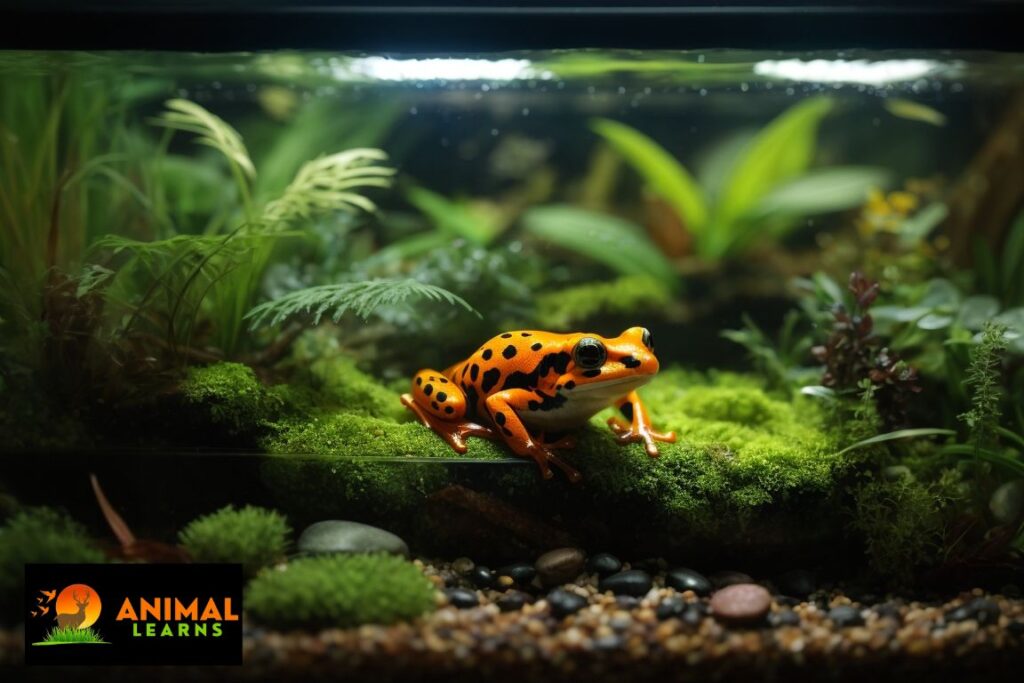
In a frog terrarium, plants are essential for the aesthetics, air quality, and general well-being of your companion the amphibian. The below-mentioned bromeliads are a popular option because of their durability, minimal maintenance requirements, and range of sizes and forms.
They even include center cups that can retain water, giving your frog a source of hydration. Ferns are another resilient and varied plant that adds some foliage and cleans the air.
Peperomias are small foliage that come in a variety of hues and textures. Philodendrons provide climbing vines height and visual flair.
Another low-maintenance vine that may be trained to climb or trail is pothos, which grows well in a variety of lighting situations. Beginners should start with spider plants since they are simple to grow and yield little spiderettes.
Mosses keep your frog moist, give texture and color, and provide hiding places. The unusual and fascinating air plants, seen below, may easily mount on branches, rocks, or other surfaces and don’t require any soil.
Recall to select plants that are appropriate for the humid terrarium environment and safe for frogs. Steer clear of poisonous plants including poinsettias, lilies, and aloe vera.
Frog Habitat and Adaptation

With the exception of the icy Antarctic, frogs live in a wide variety of habitats all around the world. Frogs have made incredible adaptations to become the lords of their respective habitats, despite the specific obstacles presented by each one.
These amphibians have an amazing array of adaptations that help them survive, whether they are living in dense rainforests, slogging through dry deserts, moving over wide grasslands, or climbing high mountains.
Skin
Their wet, permeable skin is a crucial adaption. Since frogs don’t have scales, their porous skin allows them to breathe and absorb water, hence humid surroundings are crucial to their health.
In addition to this fundamental requirement, certain frog species have evolved particular adaptations for their particular environments:
Rainforest
The high humidity in this area facilitates frogs’ ability to breathe and absorb water. In addition to offering plenty of food and refuge, the rich flora also serves as a warning to potential predators. This is seen by the vivid colors of many rainforest frogs.
Desert
To save valuable water in these dry areas, frogs have skin that is resistant to drought. Their capacity to dig deeply into the earth protects them from the intense sun and enables them to endure dry spells. Furthermore, a lot of desert frogs turn nocturnal to reduce their exposure to intense desert light.
Grassland
Grassland frogs can leap great distances because of their strong, lengthy legs. They are almost undetectable to predators due to their excellent camouflage that melds in with the surrounding grasses. Their capacity to dig burrows gives them protection and a secure area for procreation.
Mountain
To survive the extreme temperatures found up in the mountains, cold-tolerant frogs have developed. Their compact size helps them to fit through narrow locations, and their sticky toe pads assist them in managing the steep terrain.
However, modifications transcend beyond the body. Not to mention, frogs have amazing behavioral adaptations. For example, many species in hot climes turn nocturnal to avoid the heat of the sun and retain moisture.
To further improve their ability to evade hungry predators, some even can alter the color of their skin to blend in with their environment.
Because of their many adaptations, frogs may live in a wide range of environments and contribute significantly to the complex web of life. Their intriguing shapes and activities continue to attract scientists and serve as crucial markers of environmental health.
Creating a suitable and spacious frog terrarium is crucial for ensuring the well-being of your amphibian friend, providing them with the ideal environment to thrive in captivity.
FAQs
What size terrarium do I need for my frog?
The type of frog you select will determine the size of the terrarium. Generally speaking, you should provide each frog with at least 10 liters of room. You could want a much larger terrarium for larger species.
What type of substrate should I use in my frog terrarium?
The substrate needs to be able to retain moisture and drain properly. Sphagnum moss, orchid bark, and coco fiber might be an excellent combination. To create a more natural setting, you may also add additional elements like pebbles and leaf litter.
What plants should I put in my frog terrarium?
Select plants that can withstand low light levels and heavy humidity. Ferns, pothos, and bromeliads are a few excellent choices. To add variation, you may also add different plants like mosses and air plants.
How do I keep the humidity high in my frog terrarium?
Your frog terrarium can have a high humidity level in a few different ways. Using a spray bottle to spritz the terrarium regularly is one method. Using a humidifier is an additional method. To assist in raising the humidity in the terrarium, you may also add a water dish.
How often should I feed my frog?
The type of frog you have will determine how often you feed it. While some frogs require daily feedings, others may spend many days without eating. To figure out how often to feed your frog, you need investigate its individual requirements.



